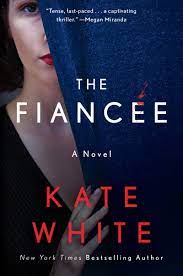When I asked suspense author Chris Pavone recently if there were any mysteries or thrillers he’d ever felt compelled to read a second time, his response was blunt: “Zero. Once the puzzle is solved, I have no interest in re-visiting it.”
I get it. Part of the reason you tear through a suspense novel—even when it’s waaaay past your bedtime–is to uncover the secret, reach the reveal, finally know whodunit, and of course learn if the protagonist survives the whole awful mess. Once you have the answers, why would you want or need to go back?
And yet there have been a few suspense novels over the years that I just had to revisit. Yes, I knew the ending, but I wanted to try to recapture at least a taste of the thrill I’d experienced earlier, and beyond that, as a suspense author myself, I wanted to take my time with the second read and note how the author seduced me, compelled me to turn the pages, sparked my obsession with certain characters (even unlikeable ones), and pulled the wool over my eyes in a totally satisfying way.
I’ve read that magicians almost never repeat a magic trick to the same group, especially if misdirection is involved, because it gives those spectators a chance to figure out how the eye was fooled. But, ha, an author can’t stop you from a second go-round.
Because my new release, The Fiancée, is a type of locked room mystery—involving a family vacation on a bucolic estate that goes horribly awry when one family member ends up dead—I decided to look back through some locked room mysteries I’d enjoyed, including Ruth Ware’s In a Dark, Dark Wood, Lucy Foley’s The Guest List, and Agatha Christie’s And Then There Were None, mainly to see how they helped me keep roomfuls of characters separate in my mind.
But if I had to name the one mystery I returned to out of pure adoration it’s Ruth Rendell’s Kissing the Gunner’s Daughter, part of her Inspector Wexford mysteries. It’s basically a police procedural without any big thrills or scares, but the revelation at the end of book took my breath away, and I had to uncover how I allowed myself to be hoodwinked despite the fact that the clues were there all along.
When I checked in with other authors, I found that many, like me, had a book or two they’d reread, not just as readers but as students of the genre. As you’ll find out below, certain authors turn up more than once on this list, and so did one particular book that I found brilliant as well. In fact, I think I’m going to read it again this week.
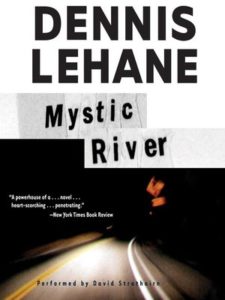
Lisa Unger, author of Confessions on the 7:45
Mystic River by Dennis Lehane
I’ve loved everything Dennis Lehane has written. His early Kenzie and Gennaro series novels such as Gone, Baby, Gone and A Drink Before the War are brilliant studies in prose and character. But Mystic River remains my favorite because of the kaleidoscope of voices, the deep dive into character, and the deft weaving of timelines and plots into one perfect tapestry. I’m not sure how many times I’ve reread the book or picked it up and started reading at a random page, but whenever I do, I’m inspired by the language, the voice, and the atmosphere of this masterwork.
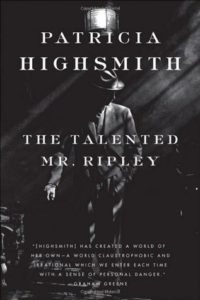
Wendy Walker, author of Don’t Look for Me
The Talented Mr. Ripley by Patricia Highsmith
I have turned to The Talented Mr. Ripley time and again when I am writing a character with a sociopathic illness. Author Patricia Highsmith perfectly captures the internal mind of Tom Ripley, making us understand precisely how he thinks and, more importantly, what triggers his violent emotional reactions. Lacking in empathy, driven by the need to preserve his perceptions of himself, Ripley is a textbook sociopath woven into a compelling story.
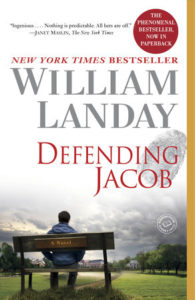
Brad Parks, author of Unthinkable
Defending Jacob by William Landay
I’ve read it three times. The first time, I was simply blown away. It was as near to perfect a thriller as you’ll ever come across. Tense. Atmospheric. Perfectly paced. Stunningly twisty and yet still completely real. The second time, I was merely making sure I hadn’t been mistaken. I wanted to see if it held together as well under close scrutiny. (It did.) The third time was for pure enjoyment, and to try to learn from it. Except what I learned is: I’ll probably never write a book this good.
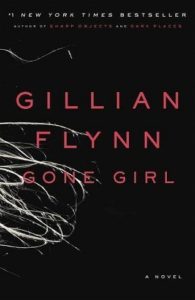
Gilly MacMillan, author of To Tell You the Truth
Gone Girl by Gillian Flynn
I had never studied creative writing so when I was trying to figure out how to write my debut, I wrote a very nerdy and detailed chapter-by-chapter breakdown of Gillian’s novel so that I could understand how to plot, pace and handle two contrasting first person narratives.
I wanted to unpick exactly how Gillian Flynn had interwoven Nick and Amy’s stories, playing their first-person narratives off against each another so cleverly, whilst providing a steady drip-feed of information to the reader that propelled the plot along and ratcheted up the tension. And of course, I was eager to understand how she pulled off that spectacular twist. Gone Girl is a masterclass in compulsive psychological thriller writing.
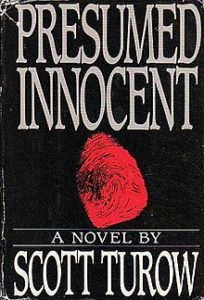
Alafair Burke, author of The Better Sister
Presumed Innocent by Scott Turow
I’ve read it a couple of times, once pretty early in my career when I was trying to strike the right balance with the use of details from a law office environment to create a setting, and again shortly after reading Gone Girl by Gillian Flynn.aThere are some really interesting comparisons to be drawn between those books, both of them favorites of mine.

Harlan Coben, author of Win
Marathon Man by William Goldman
You could have put a gun to my head, and I wouldn’t have put it down.
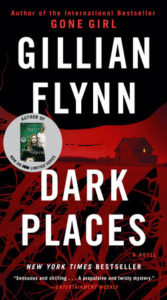
Samantha Downing, author of For Your Own Good
Dark Places by Gillian Flynn
I’m in awe of Gillian Flynn, and Dark Places is a novel I’ve read multiple times. The protagonist, Libby, is unlovable—in her own words—and not someone you would want to be around for any length of time. A classic unlikeable character. Yet she’s so compelling, and the story is so fascinating, that I keep trying to figure out how Gillian Flynn pulls this off so brilliantly!
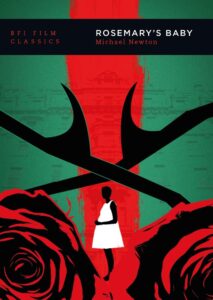
Alison Gaylin, author of If I Die Tonight
Rosemary’s Baby by Ira Levin
This is an incredible feat of storytelling that I keep coming back to. In less than three hundred pages, he’s able to weave a tale of a woman duped into birthing the antichrist—and make it chillingly believable. The characters are perfectly drawn, particularly Rosemary and her husband Guy, whose conflicting desires (starting a family vs. fame and success) make this “deal with the devil” all-too-possible, and the relentless pacing makes this book a thriller in every sense of the word.
He had a way of summarizing months and months of time in the course of one compelling paragraph before settling on a perfectly drawn out, fully realized scene. It was kind of like being strapped into a car and someone pressing on the accelerator, then slowing down so you can take in every detail as you reach the destination.
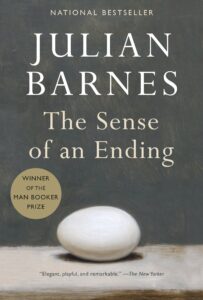
John Searles, author of Help for the Haunted
The Sense of an Ending by Julian Barnes
No matter how a book is classified—literary fiction or thriller—I think all good stories are mysteries, since there’s something the reader wants to find out. In The Sense of an Ending, one of the key mysteries is figuring out how the protagonist’s memories have been altered by time. The writer skillfully crafts a narrative from the character’s reality, then turns it on its head, so we’re surprised and fascinated. I find myself going back to it now and then to see how he pulled it off.
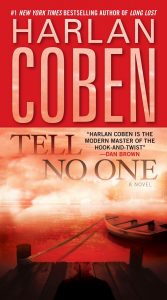
Daniel Palmer, author of The Perfect Daughter
Tell No One by Harlan Coben
I seldom re-read entire books only because there are so many great novels to read and I have so many galleys of up-and-coming writers who I want to help give a leg up as they’re breaking into the business. But I do often turn to my favorite thriller writers time and time again revisiting and re-examining their novels, at least in parts, and for different reasons.
I’ll re-read Harlan Coben’s Tell No One, or at least certain chapters of it, for voice and to remind myself how to execute a twist. I return to certain passages in Lisa Gardner books, such as Catch Me and Touch and G, for dialogue and pacing help. I’ll open books by Lisa Unger, like Confessions on the 7:45, to push me to tap into writing with heart and emotion. I’ll flip back through Joe Finder’s great novels like Suspicion for a master class on tension and how to escalate stakes. And before I embark on any writing project, I reread Stephen King’s great homage to the craft, On Writing, for inspiration and guidance.

Hallie Ephron, author of Careful What You Wish For
Defending Jacob by William Landay
When I teach fiction-writing workshops, writers want to know just how hard and fast is that old rule that the narrator of a mystery novel must “play fair” with the reader and reveal what they know. What about all those narrators who lie up a storm in some of today’s bestsellers? Trying to suss out how to write an unreliable narrator and get away with it, I reread Defending Jacob. Its narrator, Andy Barber, the father of a teenage boy accused of murder, is an attorney with a big secret that stays hidden from the reader until deep into the novel. Landay achieves his sleight of hand by taking a clever detour around internal dialogue, revealing Barber through court transcripts which gullible readers like me take as truth until we’re shown otherwise.
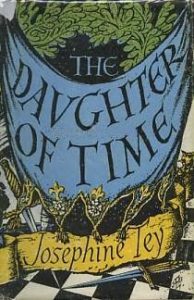
A.J. Finn, author of The Woman in the Window
The Daughter of Time by Josephine Tey
In The Daughter of Time, the underappreciated Josephine Tey—think Agatha Christie, but properly interested in character, and blessed with a more distinctive prose style—pulls off not one but two magic tricks: she stages an entire novel within the confines of a hospital room, suspense and intrigue intact, and she pumps the coldest of cold cases (think fifteen-century cold!) full of urgency. As a bonus, The Daughter of Time—the title refers to a proverb about truth—offers a wholly credible solution to one of history’s most enduringly baffling mysteries. I had a lot of fun revisiting this book.
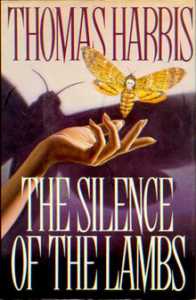
Hank Phillippi Ryan, author of The First to Lie
The Silence of the Lambs by Thomas Harris
First, read this iconic 1988 thriller for the relentlessly page-turning story. Then —once you’ve caught your breath and quieted your heart—go back, as a writer, and look at the astonishing pacing: from moment one sentence one, there is conflict, fear, a ticking clock, and the highest of stakes. And everybody wants something. This is the essential psychological cat and mouse game—and I realized its genius: it forces the reader to wonder which character is the cat and which is the mouse.
To do that, Harris chooses each word with precision and intent, and every encounter is multi-layered with story, emotion, and agenda. Each scene is cinematic, each character brilliantly drawn, and the use of point of view—cross-cut to intensify the suspense—is flawless. With his step-by-step spooling out of information and backstory, Harris lures us to emotionally connect not only with the FBI rookie Clarice Starling, but also with the gruesome psychopath Hannibal Lecter. All these years later, it’s still gripping and irresistible.

Tom Straw, author of the Richard Castle novels
A Is for Alibi by Sue Grafton
Of all the great mysteries and thrillers I have reread and could have chosen—and trust me, I did agonize—in the end I came to rest on “A” Is for Alibi. Reviewers gave it a soft handshake when it came out but for me, what makes this a novel worthy not only of rereading but study isn’t that, in the early 1980s, the beloved Sue Grafton smashed barriers and expectations. It’s what she put on the page that made this book, and her, break out. Grafton’s voice is within the canon, but without pretense. Her plotting and sense of place feed each other elegantly. There is mystery, high tension, and adrenaline-pushing action. But most of all, it comes down to character. In Kinsey Millhone she not only created a fresh, standout protagonist, but one with series legs. Think of the title. It’s pretty ballsy to christen your novel with the first letter of the alphabet. This woman had balls, and a second or even third read is inspiring and instructive to learn how the hell she delivered.
***


